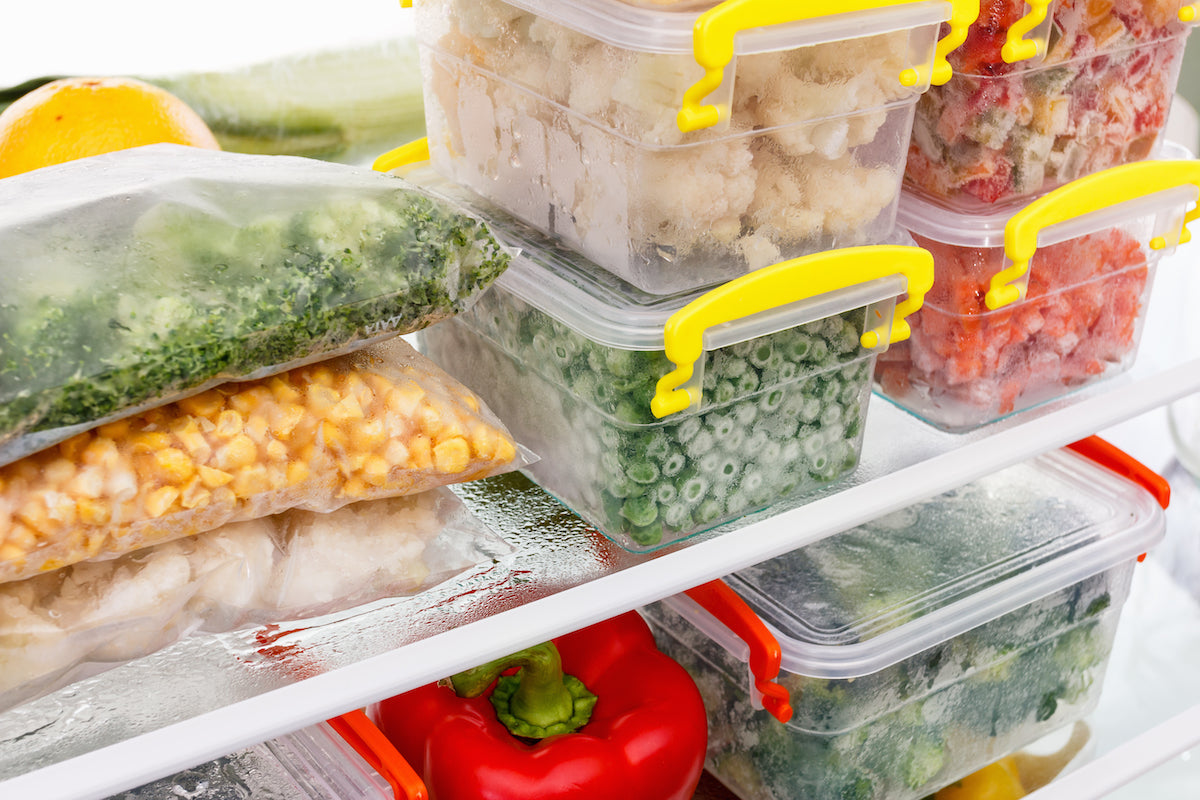
Quick Take
Whether you went a little overboard at the farmers market, or you're stocking up, it's important not to waste your perishable produce. America wastes about 1lb of food per person each day. Fruits and veggies are top culprits because they tend to go bad quickly. Follow these practices to stretch the life of your produce, safely.
On this page
Step 1: Wash your produce before freezing
Step 2: Cut up your produce
Step 3: Freeze
How to freeze other perishable foods
How to use your frozen produce
But First: A Gift For You!
Step 1: wash your produce thoroughly before freezing
Best Practice for Removing Bacteria
A safe way to reduce the number of bacteria on your fruits and veggies, is to soak your veggies in a 1 part vinegar, 2 parts water mixture. Then, rinse thoroughly with clean water. This will reduce the number of bacteria on the surface, but may affect the flavor a little.
Best Practice for Removing Pesticides
Submerge your fruits and veggies in a large bowl of water mixed with 1 teaspoon of baking soda. Let sit for about 2 minutes, then scrub with a brush and rinse thoroughly with clean water.
Best Practice for Removing Dirt
Soak fruits or veggies in cold, clean water for 2 minutes. Then use a bristle brush to scrub the nooks and crannies on rougher root vegetables. Rinse thoroughly with clean water.
After washing, pat dry with a clean paper towel or cloth, or let air dry.
(Get more tips on washing fruits and veggies here!)
Step 2: cut up your produce
If your fruit or veggie has an inedible or undesirable peel (oranges, bananas, avocados, melons, etc.) remove the peel and stems.
If your fruit or veggie has a pit, or inedible or undesirable seeds (squash, peach, apple, melons, etc.) remove seeds. If seeds are edible, but just need to be cooked separately from the meat or pulp, remove seeds, wash them, pat dry and freeze separately.
Avoid freezing the fruit or veggie whole. It is difficult to cut up produce when it is frozen, so chop into bite-sized pieces beforehand.

Optional: blanch your veggies
To keep your veggies vibrant, colorful and bacteria-free blanch them for a few seconds in boiling water. Directly following, submerge them in an ice bath to stop them from cooking. Pat dry.
Step 3: freeze
Once fruit or veggies are dry, lay them out on a cookie sheet with parchment paper, and place them in the freezer overnight. Once the produce is frozen, place it in freezer baggies. Use a straw to suck out additional air from the baggie and seal shut. Label with the name of the produce, and the date you froze it.
If you are a plastic-free household, use glass Tupperware to freeze your produce. Make sure to label and date each container.

How to Freeze Other Perishable Foods
Dairy-free milk:
Pour into ice cube trays, freeze overnight, and crack into freezer baggies. Label and date.
Nuts:
Nuts go rancid after being exposed to heat or oxygen for too long. Keep them in the freezer to lengthen their expiration.
Herbs and Garlic:
Make recipe starters by adding minced garlic, fresh herbs, and veggie broth to ice cube trays. Freeze overnight, crack into freezer baggies, label and date. Use when starting dishes.

How to use your frozen produce
There is no need to defrost beforehand.
Fruit:
Use frozen fruit in smoothies and baked goods. Heat with maple syrup or date syrup for pancakes, oatmeal, and waffles.
Veggies:
Steam, or using in soups, casseroles, pasta dishes, or any other cooked recipe.

Don't Forget Your Gift!

